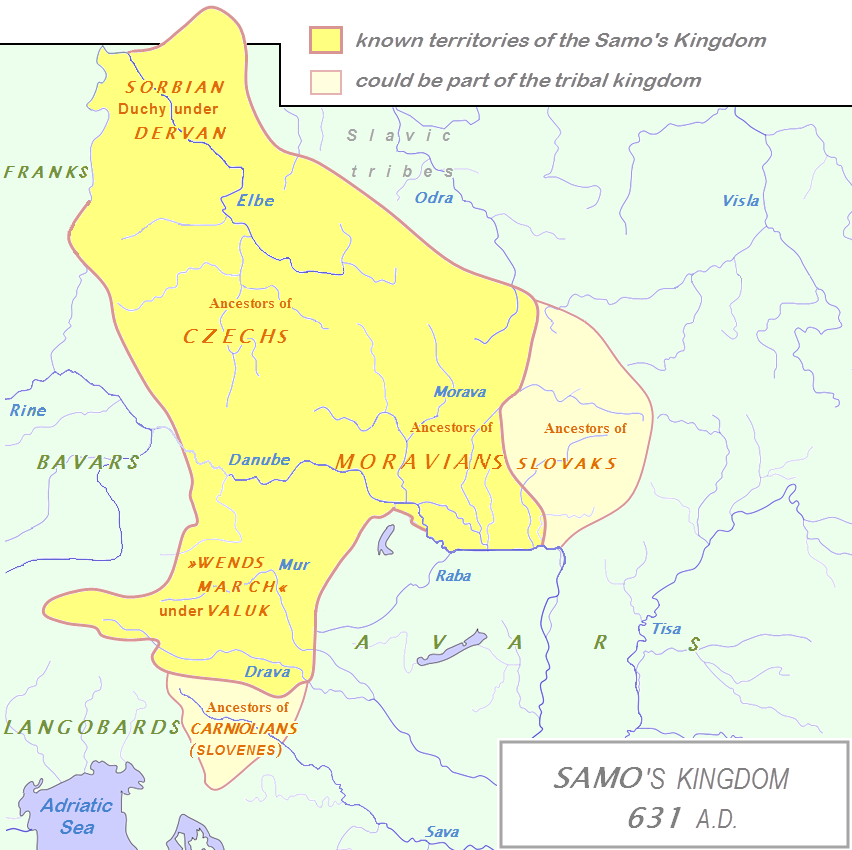|
Bogo Grafenauer
Bogo Grafenauer (16 March 1916 – 12 May 1995) was a Slovenian historian, who mostly wrote about medieval history in the Slovene Lands. Together with Milko Kos, Fran Zwitter, and Vasilij Melik, he was one of the founders of the so-called Ljubljana school of historiography. Early life He was born in Ljubljana in a well-established Carinthian Slovene family. His father, Ivan Grafenauer, was a famous literary historian and ethnologist and nephew of Franc Grafenauer, a representative in the Carinthian provincial assembly. He was the brother of the mineralogist Stanko Grafenauer and designer and choreographer Marija Grafenauer-Vogelnik. He studied history at the University of Ljubljana, graduating in 1940. In his college years, he joined the Christian left intellectual circle around Edvard Kocbek. After the Axis invasion of Yugoslavia in April 1941, he joined the Liberation Front of the Slovenian People. Between 1942 and 1943, the Italian Fascist occupation authoriti ... [...More Info...] [...Related Items...] OR: [Wikipedia] [Google] [Baidu] |
Bogo Grafenauer 1968
Bogo or BOGO may refer to: * Bogø, a Danish island in the Baltic Sea * Bogo, Cebu, a city in Cebu, Philippines * Bogo, Cameroon, a commune in Cameroon * Bogo people, in Eritrea ** Bogo language * BOGO or BOGOF, an initialism for buy one, get one free, a common form of sales promotion *Bogosort, a highly inefficient sorting algorithm * Chief Bogo, a character in the 2016 Walt Disney film ''Zootopia'' See also * * Bogey (other) * Bogus (other) {{disambiguation, geo Language and nationality disambiguation pages ... [...More Info...] [...Related Items...] OR: [Wikipedia] [Google] [Baidu] |
Christian Left
The Christian left is a range of left-wing Christian political and social movements that largely embrace social justice principles and uphold a social doctrine or social gospel. Given the inherent diversity in international political thought, the term ''Christian left'' can have different meanings and applications in different countries. While there is much overlap, the Christian left is distinct from liberal Christianity, meaning not all Christian leftists are liberal Christians and ''vice versa''. In democratic nations such as the United States, the Christian left usually aligns with modern liberalism and progressivism, using the social gospel to achieve better social and economic equality. On the more extreme end, Christian anarchism, Christian communism and Christian socialism are subsets of the socialist Christian left. Karl Marx and Friedrich Engels, authors of the ''Communist Manifesto'', both had Christian upbringings. Terminology As with any section within t ... [...More Info...] [...Related Items...] OR: [Wikipedia] [Google] [Baidu] |
Carantania
Carantania, also known as Carentania ( sl, Karantanija, german: Karantanien, in Old Slavic '), was a Slavic principality that emerged in the second half of the 7th century, in the territory of present-day southern Austria and north-eastern Slovenia. It was the predecessor of the March of Carinthia, created within the Carolingian Empire in 889. Origin of the name The name ''Carantania'' is of proto- Slavic origin. Paul the Deacon mentions ''Slavs in Carnuntum, which is erroneously called Carantanum'' (''Carnuntum, quod corrupte vocitant Carantanum''). A possible etymological explanation is that it may have been formed from a toponymic base ''carant-'' which ultimately derives from pre-Indo-European root *''karra'' meaning 'rock', or that it is of Celtic origin and derived from *''karant-'' meaning 'friend, ally'. Its Slavic name ' was adopted from the Latin *''carantanum''. The toponym ''Carinthia'' (Slovene: < |
Slavs
Slavs are the largest European ethnolinguistic group. They speak the various Slavic languages, belonging to the larger Balto-Slavic branch of the Indo-European languages. Slavs are geographically distributed throughout northern Eurasia, mainly inhabiting Central and Eastern Europe, and the Balkans to the west; and Siberia to the east. A large Slavic minority is also scattered across the Baltic states and Central Asia, while a substantial Slavic diaspora is found throughout the Americas, as a result of immigration. Present-day Slavs are classified into East Slavs (chiefly Belarusians, Russians, Rusyns, and Ukrainians), West Slavs (chiefly Czechs, Kashubians, Poles, Slovaks and Sorbs) and South Slavs (chiefly Bosniaks, Bulgarians, Croats, Macedonians, Montenegrins, Serbs and Slovenes). The vast majority of Slavs are traditionally Christians. However, modern Slavic nations and ethnic groups are considerably diverse both genetically and culturally, and relations between them � ... [...More Info...] [...Related Items...] OR: [Wikipedia] [Google] [Baidu] |
Slavic Settlement Of The Eastern Alps
The settlement of the Eastern Alps region by early Slavs took place during the 6th to 8th centuries. It is part of the southward expansion of the early Slavs which would result in the characterization of the South Slavic group, and would ultimately result in the ethnogenesis of present-day Slovenes. The Eastern Alpine territories concerned comprise modern-day Slovenia, Eastern Friuli and large parts of modern-day Austria (Carinthia, Styria, East Tyrol, Lower Austria and Upper Austria). Historical background The migration of Slavic peoples from their homeland began in roughly the late 4th to early 5th century, as Germanic peoples started moving into the territory of the Roman Empire. The migrations were stimulated by the arrival of Huns into Eastern Europe. The Germanic peoples subsequently fought for control over territories in the eastern part of the disintegrating Roman Empire. Slavic tribes were part of various tribal alliances with the Germanic (Lombards, Gepids) and Euras ... [...More Info...] [...Related Items...] OR: [Wikipedia] [Google] [Baidu] |
Early Middle Ages
The Early Middle Ages (or early medieval period), sometimes controversially referred to as the Dark Ages, is typically regarded by historians as lasting from the late 5th or early 6th century to the 10th century. They marked the start of the Middle Ages of European history, following the decline of the Western Roman Empire, and preceding the High Middle Ages ( 11th to 13th centuries). The alternative term ''late antiquity'', for the early part of the period, emphasizes elements of continuity with the Roman Empire, while ''Early Middle Ages'' is used to emphasize developments characteristic of the earlier medieval period. The period saw a continuation of trends evident since late classical antiquity, including population decline, especially in urban centres, a decline of trade, a small rise in average temperatures in the North Atlantic region and increased migration. In the 19th century the Early Middle Ages were often labelled the ''Dark Ages'', a characterization based on t ... [...More Info...] [...Related Items...] OR: [Wikipedia] [Google] [Baidu] |
Middle Ages
In the history of Europe, the Middle Ages or medieval period lasted approximately from the late 5th to the late 15th centuries, similar to the post-classical period of global history. It began with the fall of the Western Roman Empire and transitioned into the Renaissance and the Age of Discovery. The Middle Ages is the middle period of the three traditional divisions of Western history: classical antiquity, the medieval period, and the modern period. The medieval period is itself subdivided into the Early, High, and Late Middle Ages. Population decline, counterurbanisation, the collapse of centralized authority, invasions, and mass migrations of tribes, which had begun in late antiquity, continued into the Early Middle Ages. The large-scale movements of the Migration Period, including various Germanic peoples, formed new kingdoms in what remained of the Western Roman Empire. In the 7th century, North Africa and the Middle East—most recently part of the Eastern Ro ... [...More Info...] [...Related Items...] OR: [Wikipedia] [Google] [Baidu] |
Social History
Social history, often called the new social history, is a field of history that looks at the lived experience of the past. In its "golden age" it was a major growth field in the 1960s and 1970s among scholars, and still is well represented in history departments in Britain, Canada, France, Germany, and the United States. In the two decades from 1975 to 1995, the proportion of professors of history in American universities identifying with social history rose from 31% to 41%, while the proportion of political historians fell from 40% to 30%. In the history departments of British and Irish universities in 2014, of the 3410 faculty members reporting, 878 (26%) identified themselves with social history while political history came next with 841 (25%). Charles Tilly, one of the best known social historians, identifies the tasks of social history as: 1) “documenting large structural changes; 2) reconstructing the experiences of ordinary people in the course of those changes; and (3) ... [...More Info...] [...Related Items...] OR: [Wikipedia] [Google] [Baidu] |
Medievalist
The asterisk ( ), from Late Latin , from Ancient Greek , ''asteriskos'', "little star", is a typographical symbol. It is so called because it resembles a conventional image of a heraldic star. Computer scientists and mathematicians often vocalize it as star (as, for example, in ''the A* search algorithm'' or ''C*-algebra''). In English, an asterisk is usually five- or six-pointed in sans-serif typefaces, six-pointed in serif typefaces, and six- or eight-pointed when handwritten. Its most common use is to call out a footnote. It is also often used to censor offensive words. In computer science, the asterisk is commonly used as a wildcard character, or to denote pointers, repetition, or multiplication. History The asterisk has already been used as a symbol in ice age cave paintings. There is also a two thousand-year-old character used by Aristarchus of Samothrace called the , , which he used when proofreading Homeric poetry to mark lines that were duplicated. Origen is know ... [...More Info...] [...Related Items...] OR: [Wikipedia] [Google] [Baidu] |
Gonars Concentration Camp
The Gonars concentration camp was one of the several Italian concentration camps and it was established on February 23, 1942, near Gonars, Italy. Many internees were transferred to this camp from the other Italian concentration camp, Rab concentration camp, which served as equivalent of final solution in Mario Roatta's ethnic cleansing policy against ethnic Slovenes from the Italian-occupied Province of Ljubljana and Croats from Gorski Kotar, in accord with the racist 1920s speech by Benito Mussolini, along with other Italian war crimes committed on the Italian-occupied territories of Yugoslavia: The first transport of 5,343 internees (1,643 of whom were children) arrived two days after its establishment, on February 23, 1942, from the Province of Ljubljana and from the other two Italian concentration camps, the Rab camp and the camp in Monigo (near Treviso). The camp was disbanded on September 8, 1943, immediately after the Italian armistice. Only in 1973 a sacrarium was c ... [...More Info...] [...Related Items...] OR: [Wikipedia] [Google] [Baidu] |
Liberation Front Of The Slovenian People
The Liberation Front of the Slovene Nation ( sl, Osvobodilna fronta slovenskega naroda), or simply Liberation Front (''Osvobodilna fronta'', OF), originally called the Anti-Imperialist Front (''Protiimperialistična fronta'', PIF), was a Slovene anti-fascist political party. The Anti-Imperialist Front had ideological ties to the Soviet Union (which was at the time in a non-aggression pact with Nazi Germany) in its fight against the imperialistic tendencies of the United States and the United Kingdom (the western powers), and it was led by the Communist Party of Slovenia. In May 1941, weeks into the German occupation of Yugoslavia, in the first wartime issue of the illegal newspaper ''Slovenski poročevalec'' (Slovenian Reporter), members of the organization criticized the German regime and described Germans as imperialists. They started raising money for a liberation fund via the second issue of the newspaper published on 8 June 1941. When Germany attacked the Soviet Union, the An ... [...More Info...] [...Related Items...] OR: [Wikipedia] [Google] [Baidu] |






